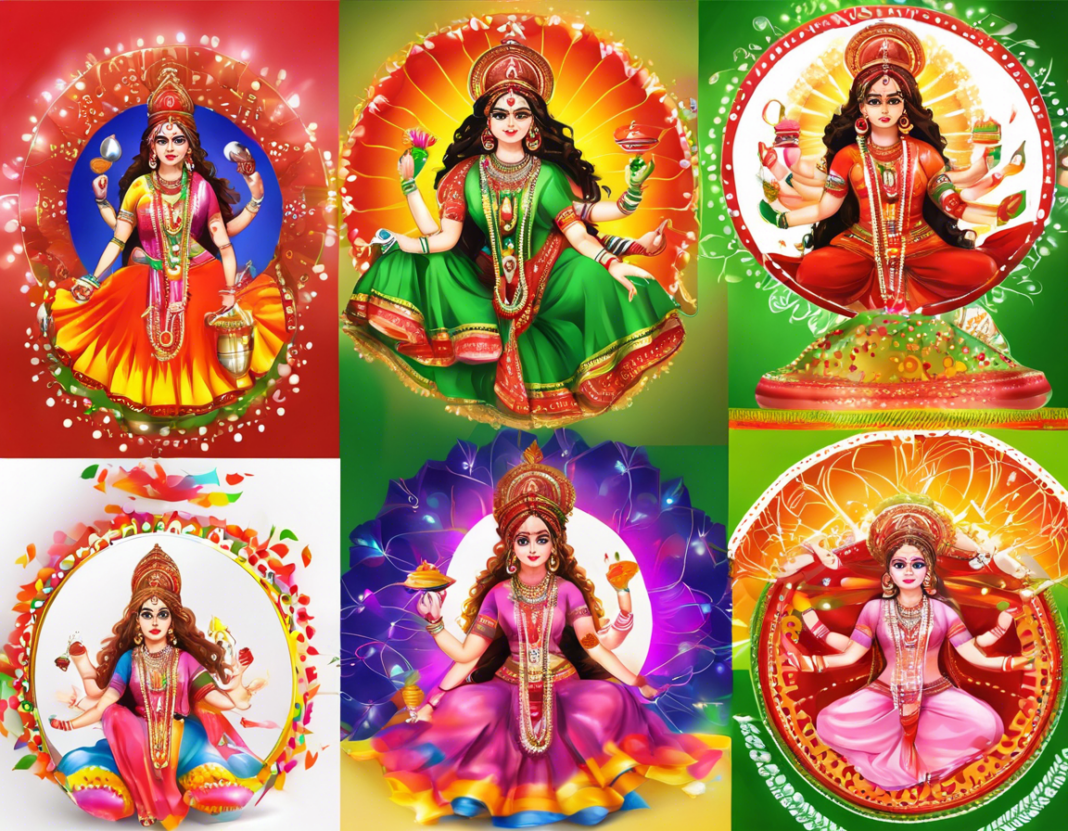Navratri, a Hindu festival that spans nine nights, is celebrated with great fervor and enthusiasm across India. Each day of Navratri is dedicated to a different form of Goddess Durga, and many people observe the tradition of wearing specific colors that are believed to attract positive energies and symbolize different aspects of life. In 2023, Navratri will be observed from October 7th to October 15th, with each day being associated with a specific color. Let’s delve deeper into the significance and symbolism of the 2023 Navratri colors.
The Significance of Navratri Colors
Navratri colors hold great significance in Hindu mythology and are believed to represent various virtues, emotions, and aspects of life. Each color is associated with different forms of Goddess Durga and is said to have the power to invoke specific energies. By wearing the designated color of the day, devotees seek the blessings of the Goddess and align themselves with the symbolic meaning of that color.
2023 Navratri Colors
Day 1: Yellow
Color: Yellow
Significance: Yellow symbolizes happiness, brightness, and knowledge. It is associated with positivity, energy, and new beginnings. Devotees wear yellow on the first day of Navratri to invoke the blessings of Goddess Shailputri.
Day 2: Green
Color: Green
Significance: Green represents growth, harmony, and nature. It symbolizes prosperity, fertility, and rejuvenation. On the second day of Navratri, people wear green to honor Goddess Brahmacharini.
Day 3: Grey
Color: Grey
Significance: Grey signifies detachment, neutrality, and balance. It represents the calmness of mind and the ability to remain steady in times of turmoil. Devotees wear grey on the third day to pay homage to Goddess Chandraghanta.
Day 4: Orange
Color: Orange
Significance: Orange symbolizes creativity, enthusiasm, and success. It represents courage, determination, and passion. On the fourth day of Navratri, wearing orange is a way to seek the blessings of Goddess Kushmanda.
Day 5: White
Color: White
Significance: White represents purity, peace, and spirituality. It symbolizes clarity, simplicity, and harmony. Devotees wear white on the fifth day to honor Goddess Skandamata.
Day 6: Red
Color: Red
Significance: Red symbolizes power, strength, and energy. It represents love, passion, and action. On the sixth day of Navratri, wearing red is a way to invoke the blessings of Goddess Katyayani.
Day 7: Royal Blue
Color: Royal Blue
Significance: Royal Blue signifies intelligence, wisdom, and truth. It symbolizes depth, stability, and loyalty. Devotees wear royal blue on the seventh day to honor Goddess Kaalratri.
Day 8: Pink
Color: Pink
Significance: Pink represents love, compassion, and kindness. It symbolizes beauty, gentleness, and affection. On the eighth day of Navratri, wearing pink is a way to seek the blessings of Goddess Mahagauri.
Day 9: Purple
Color: Purple
Significance: Purple symbolizes luxury, power, and spirituality. It represents mystery, magic, and transformation. Devotees wear purple on the ninth day to honor Goddess Siddhidatri.
The Energy of Navratri Colors
The colors of Navratri are not just visually appealing but are believed to carry specific energies that can influence our thoughts, emotions, and actions. By wearing the prescribed color each day, devotees seek to harmonize with the vibrations associated with that color and the form of the Goddess being worshipped, thus enhancing their spiritual connection and overall well-being.
FAQs:
1. Why are specific colors worn during Navratri?
Specific colors are worn during Navratri to symbolize different aspects of life and to seek the blessings of the corresponding form of Goddess Durga associated with that day.
2. Can I wear a different color during Navratri?
While it is traditionally believed to wear the specific color of the day, your intention and devotion matter more. You can still participate in the celebrations even if you don’t have the designated color.
3. What if I don’t have the designated color for a particular day?
If you don’t have the prescribed color for a specific day, you can wear a combination of colors or accessories in that shade to align with the symbolism.
4. Are there any taboos associated with Navratri colors?
There are no strict taboos associated with Navratri colors, but it is advisable to respect the tradition and symbolism by wearing the designated color if possible.
5. Can men also follow the tradition of wearing Navratri colors?
Yes, men can also participate in the tradition of wearing Navratri colors to seek blessings and align themselves with the energies associated with each color.
6. How can I incorporate Navratri colors in my outfit if I prefer subtle tones?
If you prefer subtle tones, you can incorporate Navratri colors through accessories like scarves, jewelry, or footwear to subtly represent the symbolic color of the day.
7. Are there any specific rituals associated with wearing Navratri colors?
While there are no specific rituals associated with wearing Navratri colors, chanting prayers, visiting temples, and participating in Navratri festivities are common ways to celebrate the festival.
8. Do Navratri colors have any astrological significance?
Navratri colors are more related to symbolism and tradition rather than astrological significance. They are based on the mythological significance of each day and the form of Goddess Durga being worshipped.
9. Can I wear multiple colors on a single day of Navratri?
While it is recommended to wear the specific color designated for each day, you can combine multiple colors in your outfit to incorporate the symbolism of different hues if you choose.
10. How can I use Navratri colors beyond clothing?
You can also incorporate Navratri colors in your home decor, rangoli designs, puja decorations, and festive accessories to create a vibrant and auspicious ambiance during the festival.
In conclusion, the 2023 Navratri colors carry deep symbolism and significance, offering devotees the opportunity to connect with the divine energies of Goddess Durga through color symbolism and traditional practices. By embracing the prescribed colors each day and understanding their meanings, individuals can enhance their spiritual journey and experience the blessings of Navratri in a profound and meaningful way.

